
How to believe in the magic of your creativity? Alexa Karabin, An Artist


In this Arts to Hearts Podcast Episode between Charuka Arora and Alexa Karabin, they explore the journey of becoming an artist, art school burnout, incorporating grandmother’s jewelry into artwork, the emotional impact of jewelry making, the meaning behind traditional Indian jewelry, nature-inspired artwork, rituals and habits to inspire creativity, following intuition and expressing creativity, the power of creativity and unlearning, and music and technology.
This conversation highlights the importance of believing in the magic of one’s creativity and how to go about discovering and unlocking it. Alexa shares her own experiences and tips on how to find the right balance between experimentation and play, inspiration and discipline, and how to stay motivated despite the uncertainty and challenges of the creative process.
Ultimately, this conversation is an inspiring reminder to never give up on your creativity and to keep believing in the power of art.
Topics covered in this podcast
- 00:00: Conversation between Charuka Arora and Alexa Karabin on the Journey of Becoming an Artist
- 02:00: Conversation on Art School Burnout
- 06:56: Exploring the Emotional Impact of Jewelry Making with Alexa
- 08:34: “Exploring the Meaning Behind Traditional Indian Jewelry and Its Impact on Art”
- 13:49: Conversation between Charuka Arora and Alexa about Nature-Inspired Artwork
- 19:43: “Rediscovering the Fun in Art: A Conversation with Alexa”
- 21:18: Conversation between Alexa and Charuka Arora on Protecting the Magic of Art
- 24:38: Conversation with Alexa: Exploring Rituals and Habits to Inspire Creativity
- 26:07: Conversation on Following Intuition and Expressing Creativity
- 29:23: Exploring the Power of Creativity and Unlearning
- 33:32: Interview with Artist Alexa Carabin: Exploring Her Watercolor Art and Upcoming Solo Exhibition
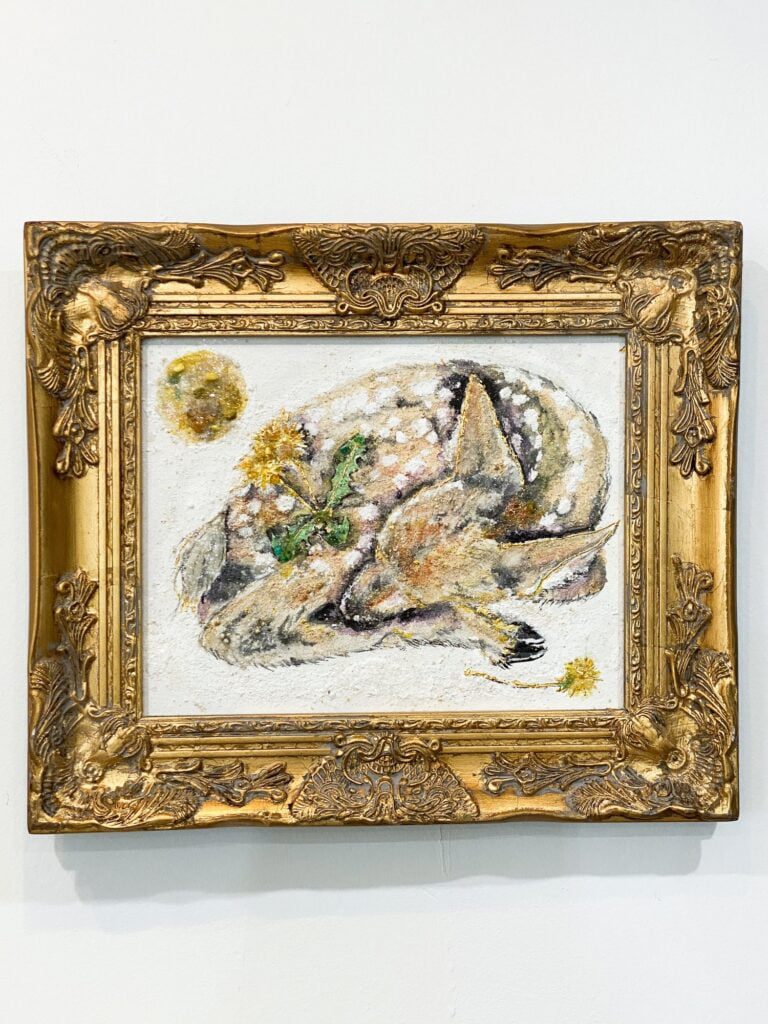


About Alexa Karabin
Alexa received her Master of Fine Arts degree from the School of the Art Institute of Chicago (2011), where she studied Print Media and Painting. She has exhibited internationally, and her work is in private collections around the world.
Through a variety of techniques, She creates artworks that explore themes of natural history, historical occurrence, memory, and cycles.
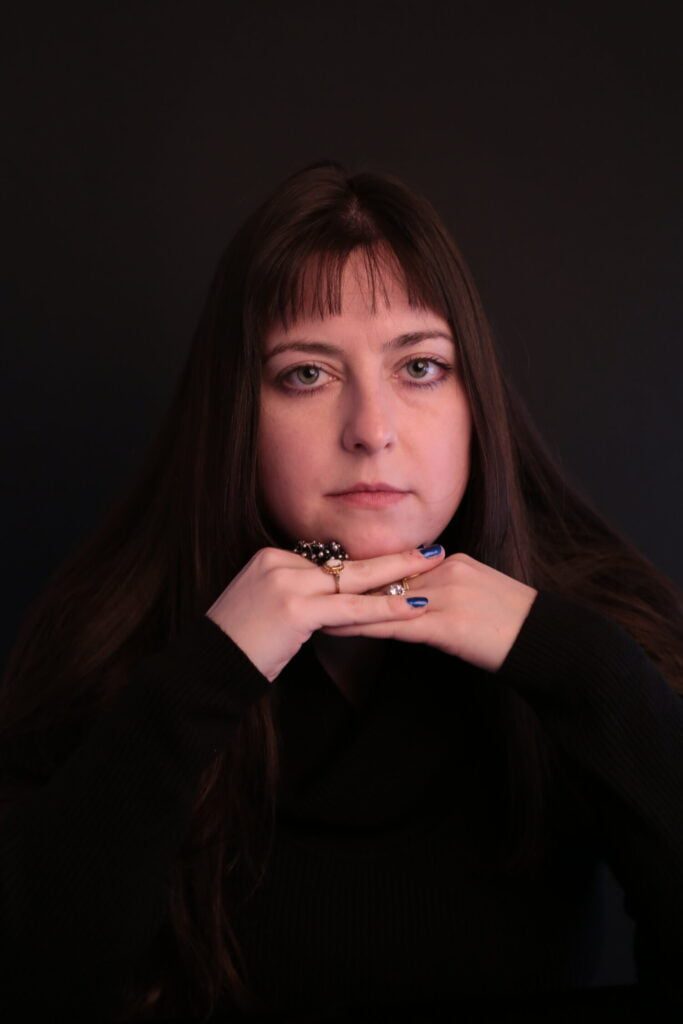
According to Alexa:
My materials are found and handmade—my most precious material is my grandmother’s antique jewelry that I crush and use to make handmade watercolors.
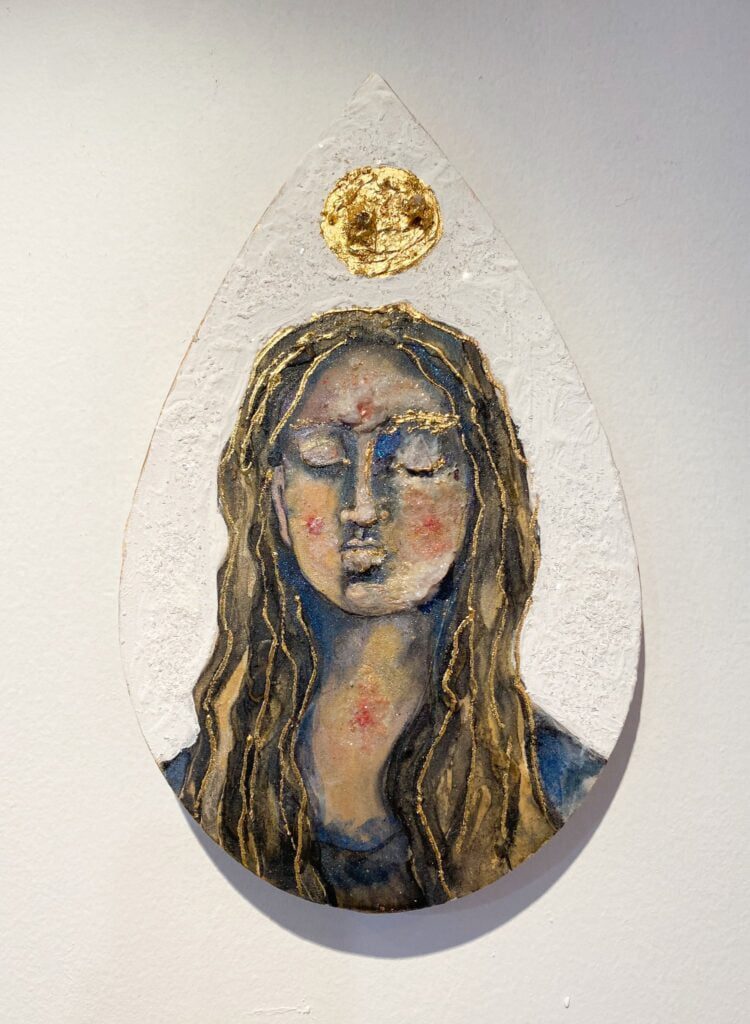
Watch & Listen to this podcast Episode
Key Highlights from the Episode
Q. Charuka: Let’s start with how you, you know, began your journey. How did you get into the yard?
A. Alexa Karabin: I was just one of those kids who said when I was 5 that I wanted to be an artist, and that was the end of it. So I just made art obsessively as a kid and kind of knew, like, at age 14, that this is what I wanted and go to school for, and so I went to art school. I did the traditional art school thing, and then I went to grad school. Yeah, that thing’s not a requirement in any sense, but I did it just because I was one of those kids who just wanted to do that.
I got a master’s degree with the intention of teaching, but I didn’t really like to teach, so I taught for a few years, and then I transitioned into just being a full-time studio artist. Now, I do art fairs and things like that to support myself.

Q. Charuka: You know what’s strange I’ve heard this repetitively on the podcast: a lot of people who go to art school—I didn’t go to art school, so I don’t know how that works. But there are artists who went to art schools. and for a few months or years, they stopped making art immediately after they graduated. They felt too critical of themselves as if they had lost their momentum, as if they had lost the allure of why they got into the arts, or as if they had burned out. This is exactly not what schools are supposed to do. I’m not saying that specifically schools are doing that, but we are hearing this again and again.
A. Alexa Karabin: Yes, it’s so common. I think everyone I went to graduate school with got burned out as soon as they got out, and it just felt like it wasn’t fun anymore. That may be because you kind of over-criticize yourself, and it feels like you can’t make anything anymore.
So for me, I kind of started from scratch at age twenty-five. About ten years ago, I was like, I have to make art. I’ve wanted to be an artist since I was a little kid, and this is something I have to do, so I’m going to start and just do it for the same reasons I did it as a kid, which is just to express myself. Not really go in and have like some big conceptual meaning behind it, but just make it a practice.
And I started showing up every day and doing, like, gradual things, and eventually, I got bored and started getting weird with it, and that’s when I introduced my grandmother’s jewelry.
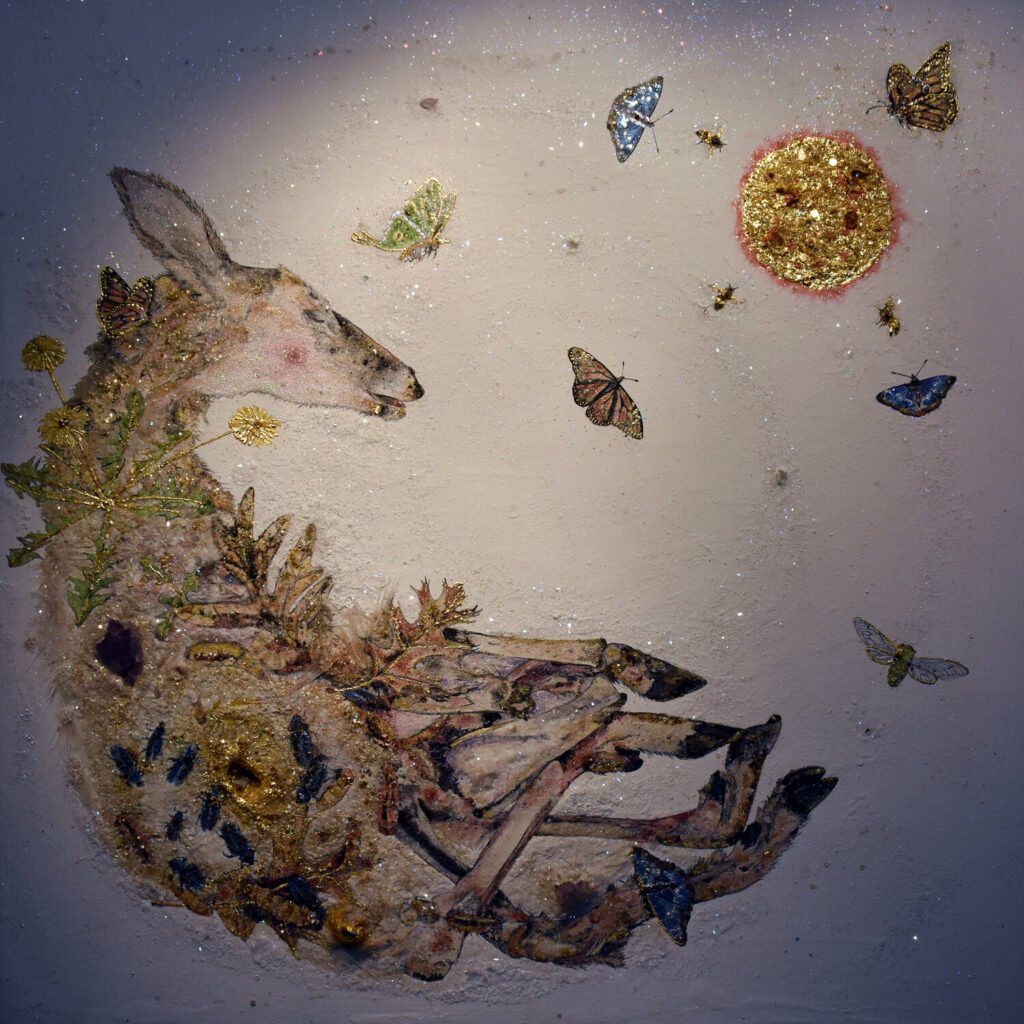
So my grandmother passed away. She gave me or I inherited all of her old jewelry, and yes, the majority of it was given to me by my grandmother; most of it was costume jewelry, but she liked to dress up. She had, like, a different outfit every day. She liked to adorn herself and have just the right look. You know, every day she had an outfit, and I knew her jewelry was very special to me. And I knew I would do something with it, so I was doing a 100-day project.
I was looking at her jewelry, and I was painting insects because I love nature, and I look at insects as a kind of adornment to our natural world because they are iridescent, gold, and sparkly, and there are exciting things about them.
And I was looking at her jewelry that I had in my studio, and I was like, Oh, this is the jewelry that my grandmother adorned herself with, and then I noticed that it was iridescent and gold and sparkly just like the insects.
What if I started crushing it and putting it into my paints?
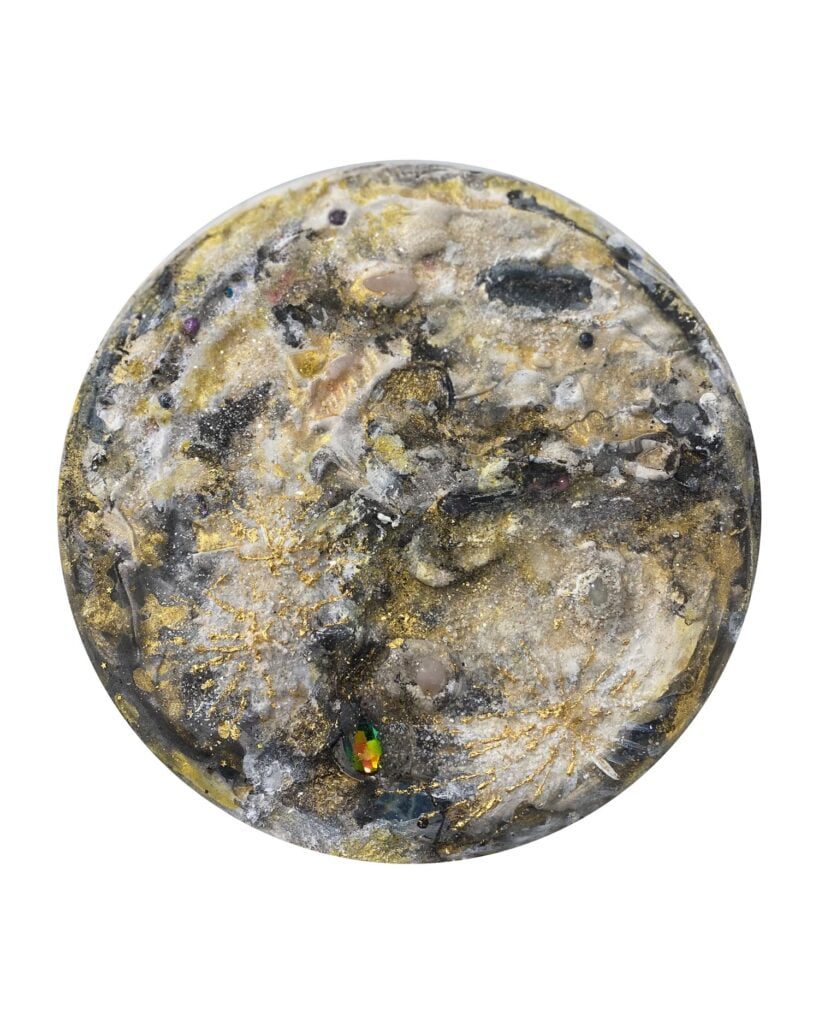
Q. Charuka: Tell me something. Do you remember what you did all of those years when you burned out? What was the missing magic, or what went away? Um. While you felt that creative block. Do you think you can talk a little bit about what took that away? What took that magic, or what brought that magic back again for you?
A. Alexa Karabin: So when I was in graduate school, I had a professor who was head of the department say something to me, and I hated him for it.
He said, Alexa, it doesn’t look like you’re having fun.
And I was always pretty serious like I took my school very seriously and I probably didn’t have fun, and I hated him for saying that probably because it was true, and it goes back to that, like when I got out and I was in an artist’s block and I kept thinking about what he said to me and I kept thinking.
Well, why did I want to become an artist in the first place, it was intuitive. It was something you knew as a child, and I just wanted to do it. Well, what was the difference between then and now? Probably the fun and
When I wasn’t having fun. It. It just took the life out of it, and when I could rediscover that, it became good again, and now I really enjoy my life, and I’m glad I became an artist, so that was fun that brought back the magic in my creativity.

Q. Charuka: Tell me something like you said, your life needs to be your work. You create this magical work that you put out in the world. That means you need to infuse a little magic into your life as well. Okay, now how did I ask this question to Ruby? Also, she’s a wonderful illustrator; she makes these childlike, innocent drawings and illustrated books, and I asked her. If you make these childlike drawings, that means you have to protect the child in you who can think and make them like this.
Now I’m asking you the same question: if you’re putting a little magic into the world, that means you need to protect the magic that you have for them. Protect that so that you know the soul and the purpose of who we are. And how does that come into play in your work? How do you do that?
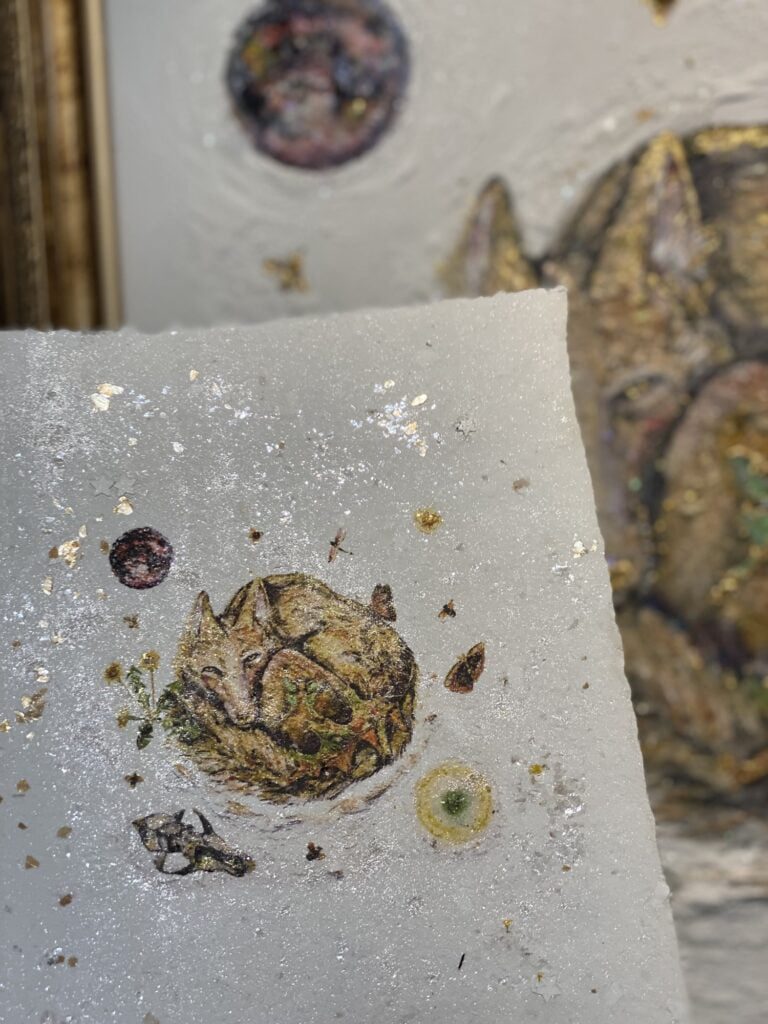
A. Alexa Karabin: Um, well, it’s something I forgot how to do, and then I remember this distinct moment when I remembered, and so I have young kids, and at the time, I don’t think I had kids yet, but I was drawing. A lot of insects and an adult’s reaction to insects and It’s a small thing, but it’s significant.
Ah, a lot of people go, Oh, or I hate spiders, or that’s disgusting. But. I noticed that when I did art fairs, the children responded with such joy and excitement, and when I saw a kid walk into my booth and have a genuinely excited response.
It was like a wave over me that I remembered what it was like to be a kid and be close to the ground and see something for the first time and be excited, and that was kind of the moment I started using a lot of sparkle in my work because of that childhood innocence thing like that.
The spark of joy that I saw in that child’s face was like, Really? It was revigorating, and it reminded me of that feeling, and then since I’ve had kids and watched them respond to nature. And respond to life in general, like seeing something for the first time, because you forget that as an adult, like what it was like, and that’s reminded me and has definitely been an inspiration in my work, that excitement that they have.






Liked what you read?
Listen to this & other episodes on








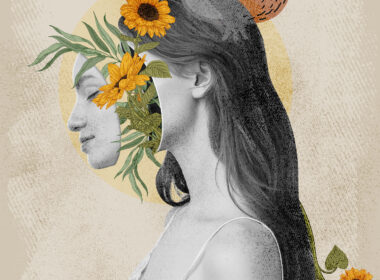
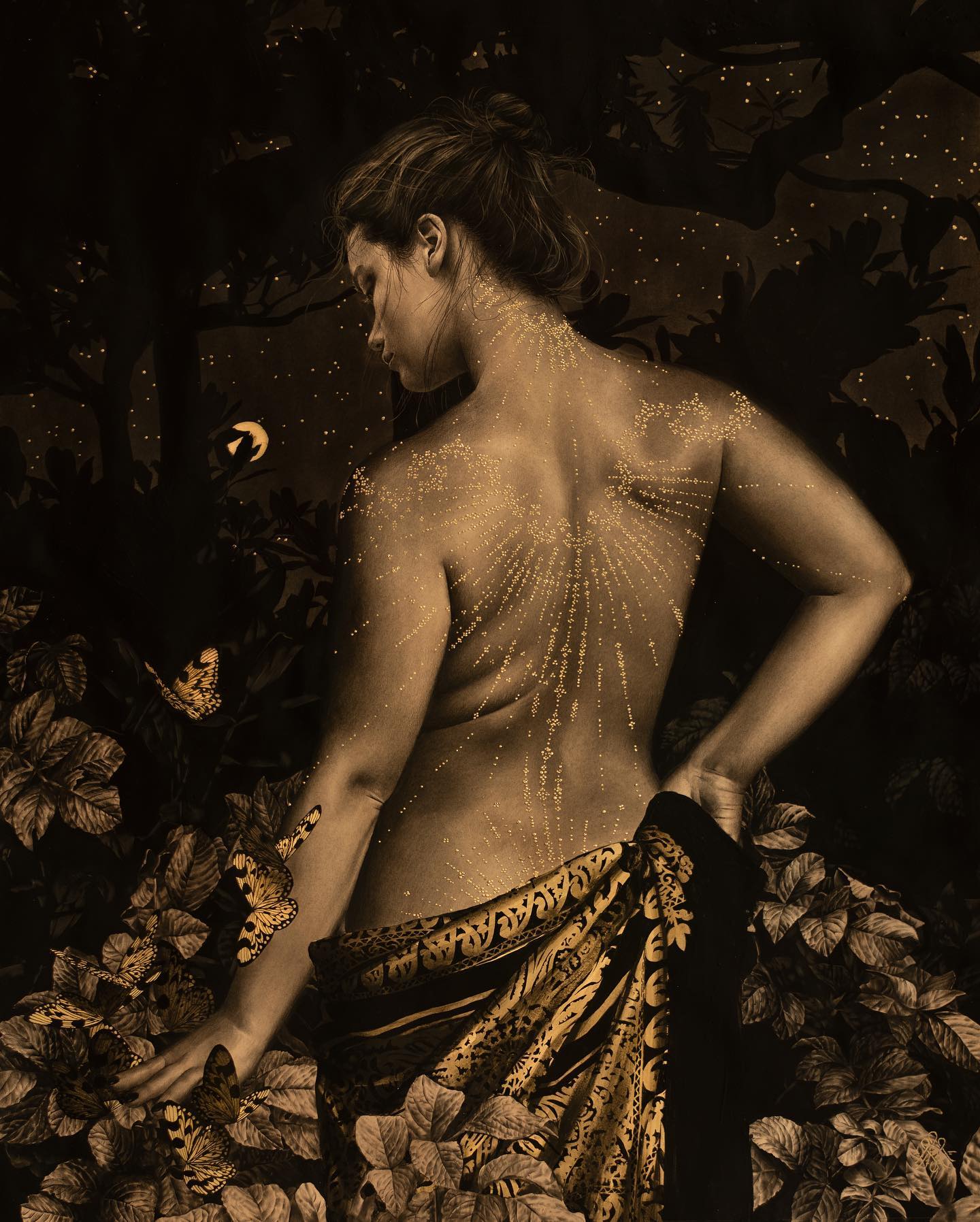

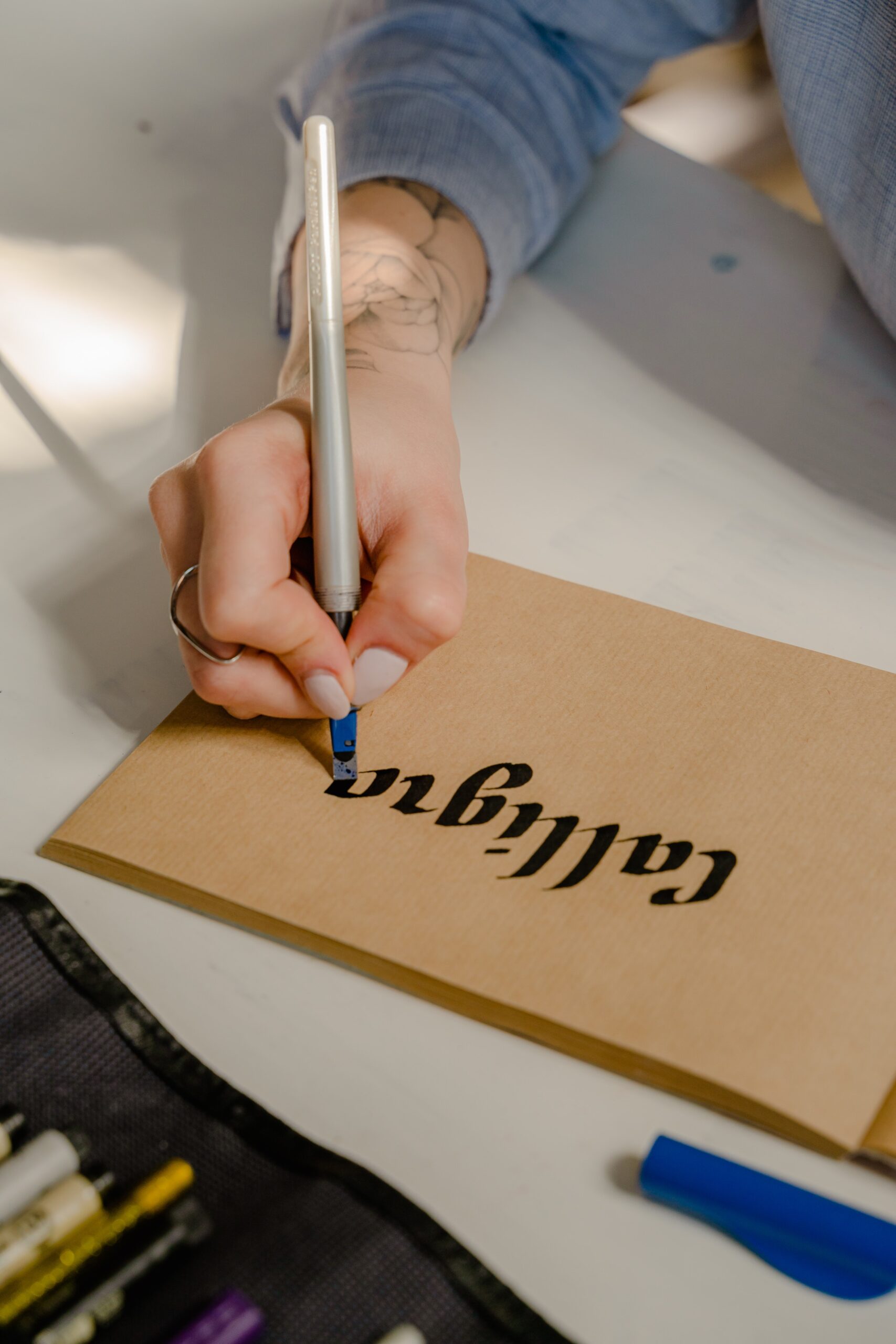

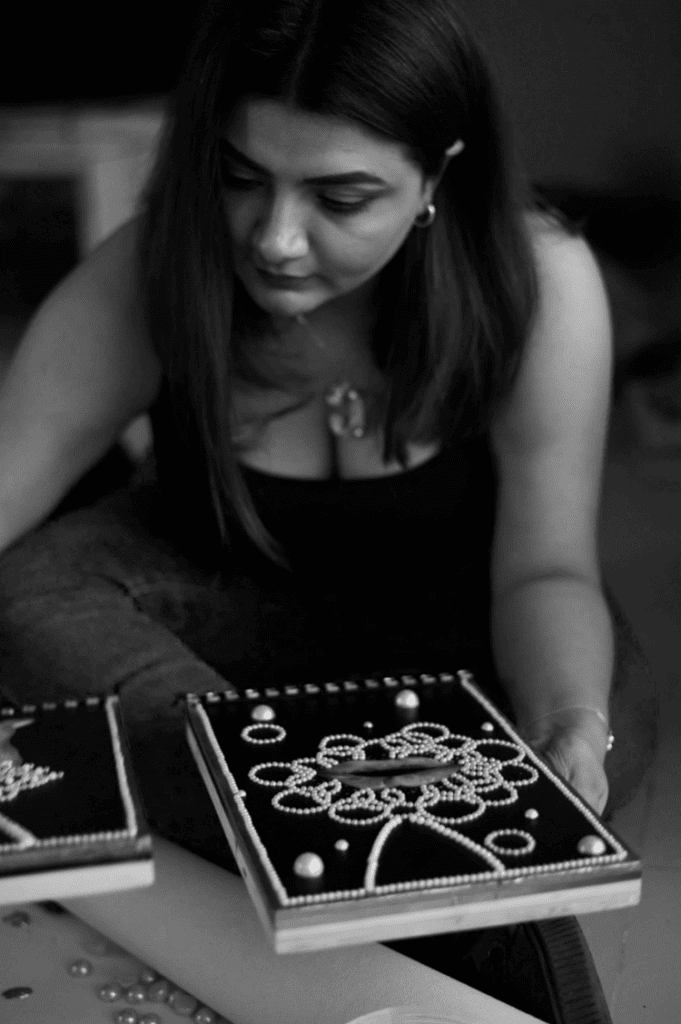
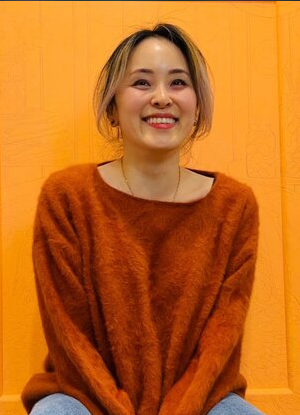
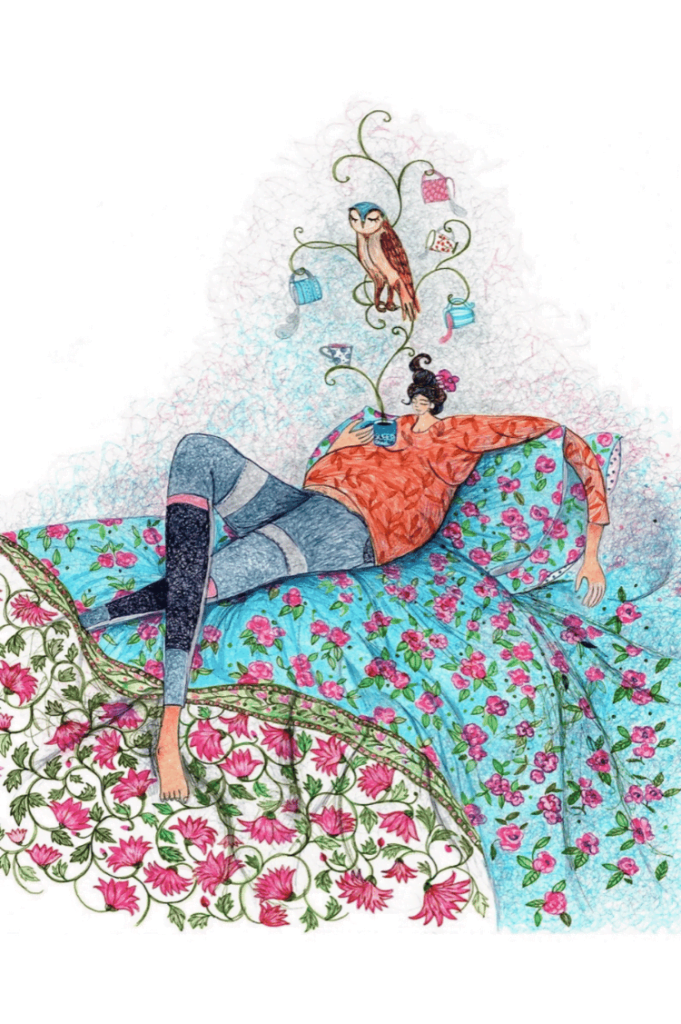

Comments 13